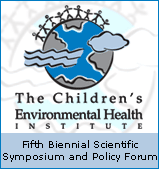| Environmental Public Health Surveillance: Possible Estuary-Associated Syndrome Lorraine C. Backer, Amanda Sue Niskar, Carol Rubin, Kim Blindauer, Dennis Christianson, Luke Naeher, and Helen Schurz Rogers Abstract
Public health surveillance involves the collection, analysis, and dissemination of data for use in public health practice. A surveillance system includes the capacity to collect and analyze data as well as the ability to disseminate the data to public health agencies that can undertake effective prevention and control activities. An emerging issue in environmental public health surveillance involves human exposure to the toxins produced by microorganisms present in oceans and estuaries. One of these organisms is Pfiesteria piscicida Steidinger & Burkholder, a dinoflagellate found in estuaries along the Atlantic and gulf coasts of the United States. There have been reports of both human illness associated with occupational exposures to concentrated laboratory cultures of P. piscicida and massive fill kills associated with the presence of the organism in rivers and estuaries. These reports, and anecdotal reports from people who worked on rivers where the organism has been found, generated concern that environmental exposures to P. piscicida, similar organisms, or perhaps a toxin or toxins produced by the organism(s) , could cause adverse human health effects. To begin to evaluate the public health burden associated with P. piscicida, investigators from the National Center for Environmental Health at Centers for Disease Control and Prevention and health agencies from states along the Atlantic coast collaborated to develop a passive surveillance system for collecting, classifying, and tracking public inquiries about the organism. Specifically, the group developed exposure and symptom criteria and developed data collection and reporting capabilities to capture the human health parameters collectively referred to as possible estuary-associated syndrome (PEAS) . The surveillance system was implemented in six states (Delaware, Florida, Maryland, North Carolina, South Carolina, Virginia) beginning in June 1998. From 1 June 1998 through 30 June 2001, the six state health agencies participating in the PEAS surveillance system received 3,859 calls: 3,768 callers requested information and 91 callers reported symptoms. Five individuals have been identified as meeting PEAS criteria. Key words: CDC, Centers for Control and Prevention, environmental public health, epidemiology, estuary, human health, PEAS, Pfiesteria piscicida, possible estuary-associated syndrome, surveillance. -- Environ Health Perspect 109(suppl 5) :797-801 (2001) . http://ehpnet1.niehs.nih.gov/docs/2001/suppl-5/797-801backer/abstract.html
The full version of this article is available for free in HTML or PDF formats. |

